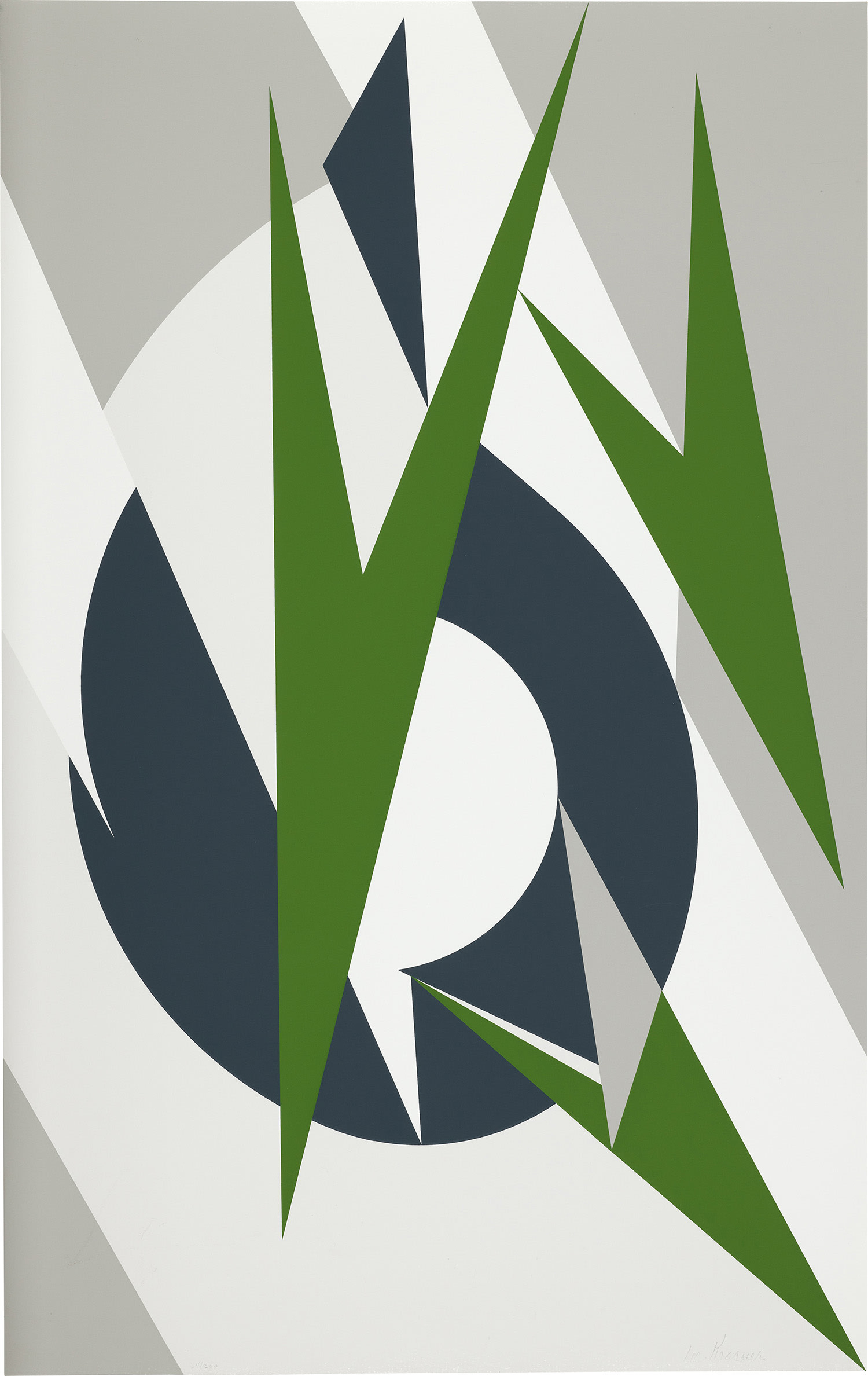

20
Lee Krasner
Embrace, from The Superlative U.S. Olympic Editions
1976
Screenprint in colors, on wove paper, the full sheet.
S. 39 7/8 x 25 7/8 in. (101.3 x 65.7 cm)
Signed and numbered 64/200 in pencil, published by Kennedy Graphics, New York, for the 1976 Montreal Olympics, unframed.